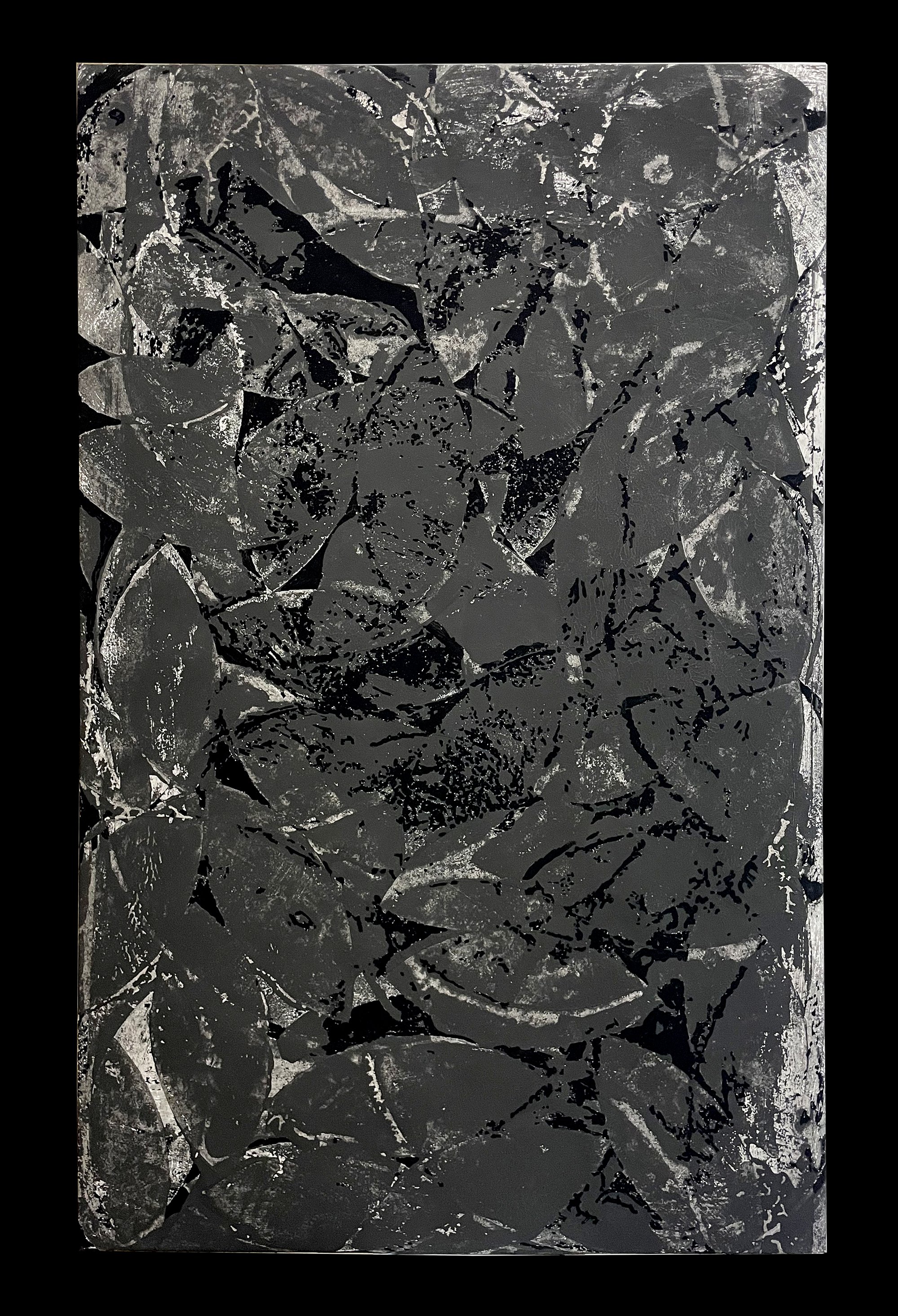
Ohaguro Paintings
“We Orientals tend to seek our satisfactions in whatever surroundings we happen to find ourselves, to content ourselves with things as they are; and so darkness causes us no discontent, we resign ourselves to it as inevitable. If light is scarce, then light is scarce; we will immerse ourselves in the darkness and there discover its own particular beauty. But the progressive Westerner is determined always to better his lot. From candle to oil lamp, oil lamp to gaslight, gaslight to electric light—his quest for a brighter light never ceases, he spares no pains to eradicate even the minutest shadow.”
(Excerpt from the essay “In Praise of Shadows” by Japanese author Junichiro Tanizaki)
I’m working on new body of work inspired by the essay “In Praise of Shadows” by Japanese author Junichiro Tanizaki. I’m working with the darkest paint that one is able to obtain and use for making art; Musou black, which is a Japanese paint. I use prints and I overpaint the white parts of the image with the dark paint with a tiny brush, dot by dot, to erase the light in it. With this gesture, I give the black paint that I have been using for printing in the past 15 years a different quality; it becomes greyish, almost glossy silver.
After the Japanese custom of blackening one’s teeth, I call these blackened prints ohaguro paintings. One of the main reasons for doing ohaguro is the fact that for hundreds of years, pitch black objects were regarded as immensely pretty. It is only natural that people wanted to get closer to what they deemed as beautiful, just like the process of having one’s teeth bleached to appear whiter is completely normal in modern days.
I believe that facing darkness and shadows is inevitable, and by letting them in and being with them without wanting to overcome them with light, tames them and allows us to become friends. I can see the beauty in the dark room, in the darkest of shadows that then also give new quality to something that I thought would be the darkest possible.
“(…) in the West our most powerful ally is light. (…) And for us the act of inhabitation is mostly performed in cahoots with the sun, our staunchest ally, bathing our world or flickering through it, helping give it light.
It comes with the thrill of a slap for us then to hear praise of shadows and darkness (…) darkness illuminates for us a culture very different from our own, but at the same time it helps us to look deep into ourselves to our own inhabitation of our world, as it describes with spinetingling insights the traditional Japanese inhabitation of theirs. It could change our lives.”
(Foreword by Charles Moore, School of Architecture, UCLA to the essay “In Praise of Shadows” by Japanese author Junichiro Tanizaki)
My aim is to exhibit the overpainted prints in an alcove painted black, so the paintings emerge from the darkness of the space. With this gesture, darkness gives a new quality to the color black; it allows the eye to see the nuances, the beautiful, tiny, glimmering parts of these black paintings – it gives them life. A white surface takes this beauty away by strongly reflecting light. An alcove, resembling the picture alcoves of Japanese rooms, allows for the paintings to blend in with darkness, to give depth to the shadows, creating a blur and lack of clarity, but at the same time, highlighting the details of the paintings. The contrast between the blurred whole and the sharpness of the details creates an absolute harmony that invites the viewer to plunge into the darkness.






































